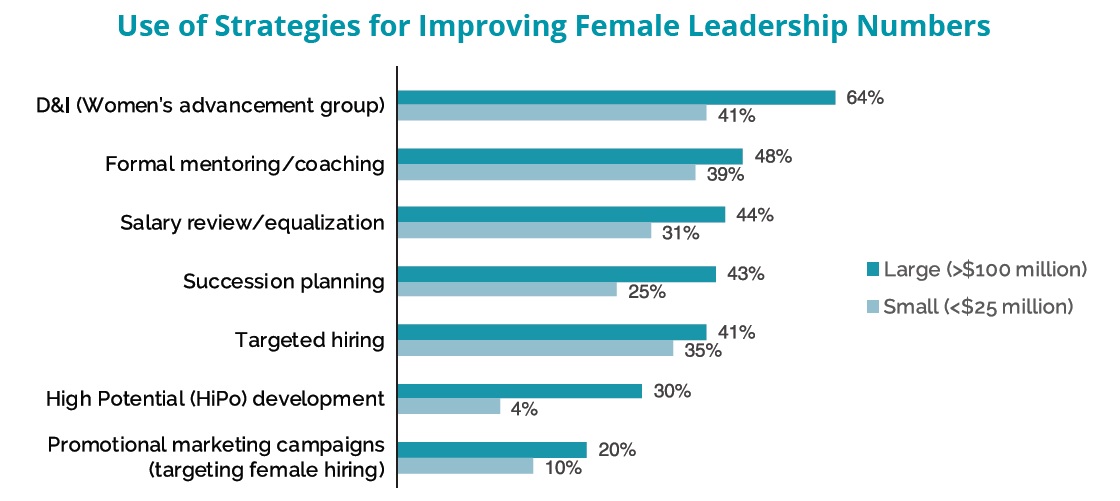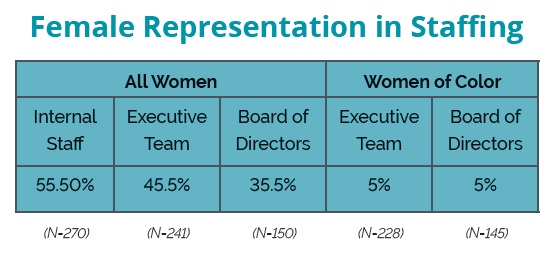Recently published findings from the World Economic Forum’s 2021 Global Gender Gap Report estimate that it will take an average of 135.6 years for women and men to reach parity on a range of factors worldwide. This estimate grew by a whopping 36 years in the space of only one year, marking the largest widening of the gap in one year since the report started in 2006. With the pandemic having had acute adverse impacts on women — resulting in the coined term “shecession” — how is the staffing industry performing, and what strategies are working to help women reach their potential in the wider working world?
The Journey
Despite the high proportion of women working in frontline and managerial roles at staffing firms, women remain underrepresented at the executive and board levels. Data elaborated on by SIA from the Women Business Collaborative survey shows that women accounted for 56% of all internal staff at US staffing firms. The prominence of women in the staffing industry is also paralleled by the high proportion of women working more broadly in human resources occupations. According to 2020 data from the US Bureau of Labor Statistics, among 832,000 HR workers, 74% were women.
Evidence also indicates that, very much like the post-pandemic recovery, the proportion of women in executive roles or in higher management is not uniform. The representation of women at the executive and board levels declines as the size of the firm increases, according to the WBC benchmark survey. At the executive level, women represented 56% of such positions at small staffing firms, with a midrange from 36% to 96%. This statistic highlights the existence of many small staffing firms with nearly all female executive teams. In contrast, women accounted for a median 36% of executives at midsize firms and 26% at large firms.
Segment Variation
Differences also arise when analyzing the sector in which the staffing firms operate. The representation of women at the executive and board level at commercial staffing firms is modestly higher than at IT and healthcare staffing firms. At the executive level, women accounted for 46% of such positions at commercial staffing firms at the median; in comparison, this figure was 36% at staffing firms that supplied IT and healthcare workers.
When considering both race and gender, we find the numbers even more dire: Women of color are even less represented in executive and board roles at staffing firms. It is a sad realization that, according to the WBC survey, women of color comprise just 5% of these roles at staffing firms.
Legislative Boost
There are many cases for and against affirmative action in the workforce; however, legislation that requires public companies to have women represented on their boards at specified levels has generally been perceived as a positive step. Take California’s SB 826, which was signed by Gov. Jerry Brown in September 2018 and required public companies headquartered in the state to have at least one woman on their boards by the end of 2019 and a minimum of two or three women by 2021, depending on the size of their boards. The result so far: The percentage of women on California-based companies’ boards rose to 26.5% in 2021 from 15.5% in 2018.
Silver Linings
While the pandemic crisis saw women losing ground in the quest to close the gender gap, it also represents an opportunity. With technological advancements and hybrid working patterns being thrust to the forefront of many organizations, it would be perceived that these “new” best practices can be used to advance better working models for all. When considering staffing firms’ strategies for advancing women in the workplace, the best practices are also based on the size of the organization.
For example, diversity and inclusion groups focused on women’s advancement was a strategy employed by 64% of organizations with more than $100 million in revenue. However, only 41% of smaller organizations consider this strategy. Formal mentoring is the second most common plan of action, with 48% of larger and 39% of smaller companies choosing this path, followed by salary equalization with 44% of larger organizations choosing this over 31% of the smaller.
Regardless of the all the initiatives and governmental backing, the “broken rung” — a phenomenon in which the biggest obstacle women face on the path to senior leadership is at the first step up to manager, especially in larger organizations — is still very much broken. Perhaps a rise in more flexible and more empathetic workplaces is a sign that we are moving in the correct direction. A culture in which we nurture the entire workforce can only be a positive step in order for women to have equality and reach their full potential.









